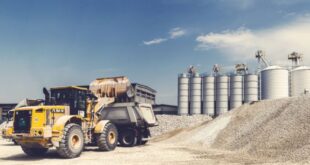As the dynamics of global trade continue to evolve, the supply chain and transportation sector faces an array of emerging trends and challenges in 2023.
Photo by Seb Creativo on Unsplash
From disruptive technologies to regulatory changes, businesses must navigate a multitude of factors to ensure they stay competitive and sustainable. This article outlines some key trends and expectations to keep an eye on in 2023.
Increased Digitalization
The adoption of digital technologies in supply chain and transportation is no longer an option but a necessity.
Technological advancements such as AI, Machine Learning, IoT, and Blockchain are enhancing visibility, traceability, and efficiency in the supply chain. Predictive analytics are helping organizations anticipate potential disruptions, streamline operations, and make data-driven decisions.
In 2023, expect a deeper integration of these technologies, leading to more agile, transparent, and resilient supply chains.
Sustainability and Circular Economy
With growing environmental concerns and increased regulatory pressures, sustainability has become a vital component of modern supply chains. Businesses are shifting towards a circular economy model that aims to minimize waste and make the most of resources.
This entails adopting sustainable sourcing practices, optimizing logistics to reduce carbon emissions, and integrating recycling and reuse strategies into supply chain operations.
Resilient Supply Chains
The COVID-19 pandemic underscored the need for more resilient supply chains. As a response, companies are diversifying their supplier base, localizing production where possible, and investing in advanced forecasting tools.
In 2023, expect to see businesses investing heavily in creating robust, flexible supply chains that can withstand future shocks.
Innovations in Freight Efficiency
As we move forward into 2023, another trend that stands at the forefront is the remarkable innovation in freight efficiency, particularly within the realm of semi-fuel trucks. This advancement is a response to increasing fuel prices, stringent emission regulations, and the growing demand for sustainable transportation solutions.
Truck manufacturers and logistics companies are investing heavily in research and development to enhance fuel efficiency and minimize the environmental impact. This has led to the introduction of several features such as advanced aerodynamics, efficient engine designs, and low rolling resistance tires.
Technologies like predictive cruise control and automated manual transmissions are also playing an essential role in increasing semi-truck fuel efficiency.
The advent of telematics and advanced analytics is further revolutionizing this space. These technologies provide real-time insights into vehicle performance and driving behaviors, enabling proactive maintenance and fuel-efficient driving.
Companies can leverage this data to optimize routes, reduce idling time, and improve overall fuel economy.
Also, we cannot overlook the rise of electric and hydrogen-powered semi-trucks. Companies like Tesla, with their all-electric Semi, and Nikola Corporation, with their hydrogen fuel cell trucks, are pushing the boundaries of what’s possible in freight transportation.
These trucks offer a promising alternative to traditional diesel trucks, significantly reducing emissions without compromising on range and payload capacity.
It is obvious that semi-fuel truck efficiency is undergoing a radical transformation. Through a combination of technological innovation, operational changes, and alternative fuel sources, the industry is moving towards a more efficient and sustainable future.
This progress is expected to reshape the supply chain and transportation landscape in 2023 and beyond.
Autonomous Transportation and Drones
The advent of autonomous vehicles and drones offers promising prospects for the transportation sector. Companies like Tesla and Waymo are working tirelessly to perfect self-driving technologies, which have significant implications for freight transportation.
At the same time, drones are set to revolutionize last-mile delivery, offering quicker, cost-effective, and contactless delivery options.
Regulatory Changes and Trade Agreements
Changes in trade policies and regulations can greatly impact the global supply chain and transportation landscape.
For instance, Brexit had significant implications for trade between the UK and EU. Similarly, the U.S.-China trade war led to many companies restructuring their supply chains.
Companies must stay abreast of such changes and develop agile strategies to swiftly respond to new trade agreements and regulations.
Conclusion
The supply chain and transportation landscape in 2023 is set to be influenced by technology, sustainability pressures, and evolving global trade dynamics.
Forward-looking companies are already positioning themselves to thrive in this environment, leveraging new technologies and embracing sustainable practices. Businesses that can navigate these changes, adapt quickly, and innovate will not only survive but thrive in this exciting new era for the supply chain and transportation industry.
 khamush.com Lifestyle | Motivation | Poems
khamush.com Lifestyle | Motivation | Poems




